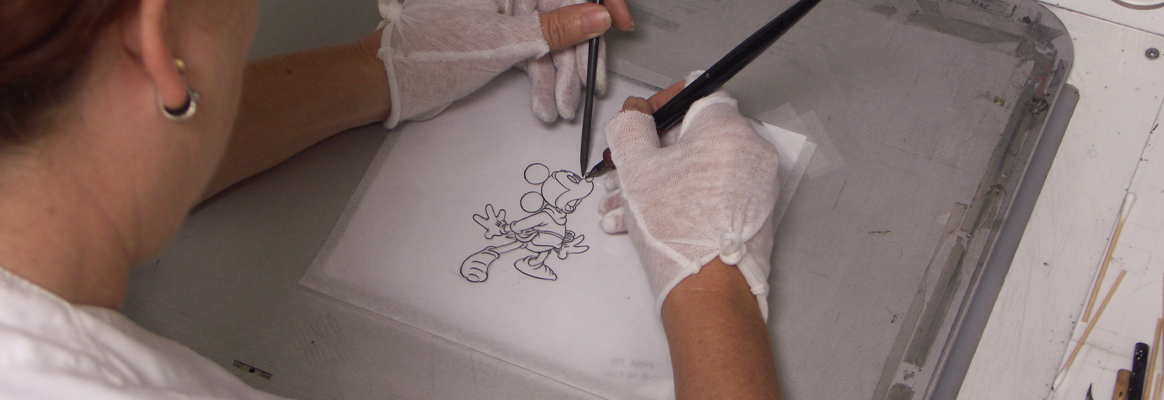CELS ARE MADE OF WONDER STUFF
A BRIEF HISTORY
In 1872, the Celluloid Manufacturing Company opened in Newark, New Jersey, where the first man-made plastic, called Celluloid, was commercially produced. The revolutionary product made the movies possible in so many ways. And it gave us animation cels.
It Was Wonder Stuff
Being a marvelously moldable substance, Celluloid was used to create an entire array of products, including toys, jewelry, vanity sets, mirror handles and frames, powder boxes, hair brushes, eyeglass frames, toothbrushes, rhinestones, dice, billiard balls, detachable shirt collars and fronts, and was even used as a base for airplane dope. Back then airplanes were fabric-covered, wooden-structured vehicles. The fabric was coated with collodion, a liquid form of Celluloid, making it stiff and sealing it so wind would not pass through. During WW1 what did pass through was bullets, and it was the friction of the bullets passing through that ignited the collodion-coated fabric, causing the planes to burn and crash.
Kodak Becomes A Household Word
It wasn’t long before George Eastman introduced his first great consumer invention: the Kodak Camera. In 1888, the innovative little black box camera, with its tiny Celluloid lens and safety windows, was disposable, When all the shots on a roll of film (also Celluloid) had been taken, customers sent the entire camera back to Kodak, to receive, weeks later, their film, photo prints, and a new camera loaded and ready for use. There is much more to the ins and outs of how Celluloid made the film industry possible, but suffice it to say here the strip film Kodak sold in their box cameras was first made in large rolls and could be slit into ribbons and perforated like 35mm film or cut in to sheets like those used for animation cels.
Animation Cels Were Never Insulted
The strip film used in movies was made of cellulose nitrate and was notoriously flammable. The camphor used as a plasticizer for the material was adversely affected by the developer, wash, and fixing baths to which it was subjected in the film-making process, causing movie films to become brittle and inflexible, hastening their deterioration. Many silent movies have been lost because of the nature of the film process at that time.
Cels for animation, also made of cellulose nitrate in the same way as strip film, were “raw” nitrocellulose. While they were also flammable, the difference is that after manufacture they never sustained any chemical insult, as their movie relatives did. Hence, cels are living proof of the durability of cellulose nitrate or “nitrate” cels as we call them today.
At Disney, for instance, Snow White and the Seven Dwarfs, Pinocchio, the Silly Symphonies, and pre-production work for Fantasia were created on nitrate cels. Other studios used nitrate cels as well. By the early 1950s, however, cellulose acetate, a non-flammable cousin of nitrate had taken its place industry wide.
Today, nitrate cels are, we are happy to report, still with us, but despite their durability they require special handling, special consideration in display and special care in order to help them last as long as possible.
Who You Gonna Call?
You’ll be fascinated to learn that Disney used four different types of cel in their history: nitrate, di-acetate, tri-acetate and polyester. While superficially similar, they are all quite different. No two are the same and each has its own distinct conservation requirements.
What kind do you own? Being able to tell what cel material your art is rendered on is possibly one of the most important things you can know about your collection. Would- be restorers unaware of the danger of misidentification can ruin a fine piece of film history with as little as one drop of water or a lack of understanding of the needs of the particular material.
S/R Labs celebrates its 41st year of service to the motion picture and animation art community. In this time, we have supplied materials, inks, paints, technical information, and assistance to studios, museums, galleries, conservators, framers, film storage vaults, and collectors world wide. That includes you! Please feel free to call us at any time. Your art is our concern. It always was.

